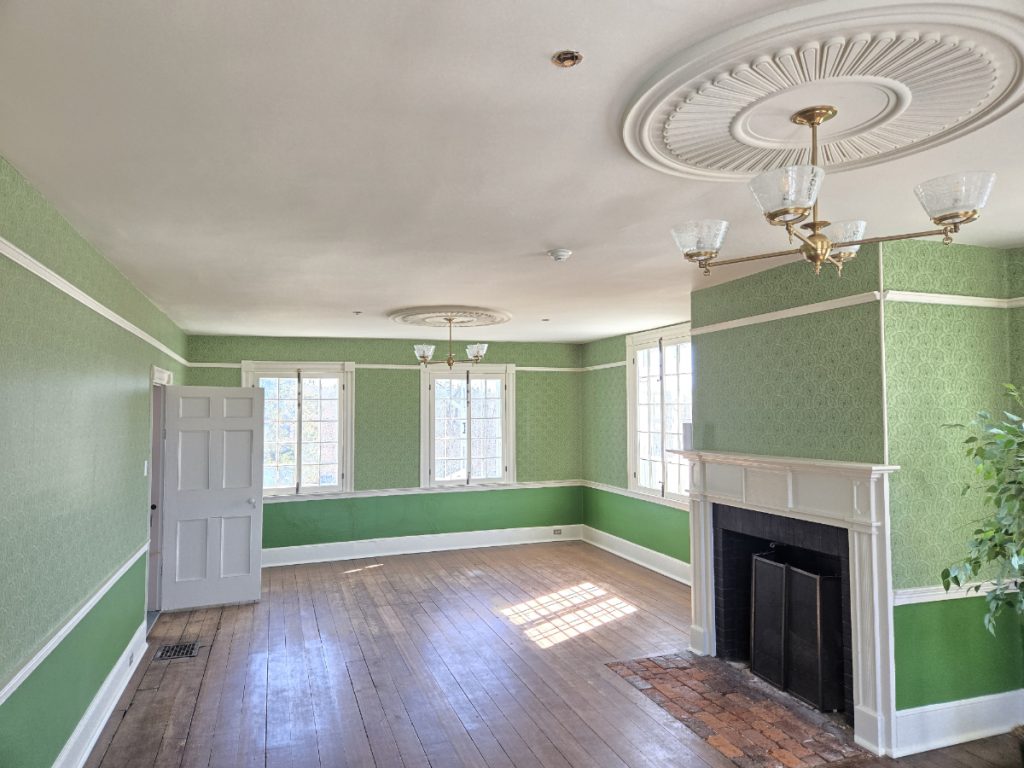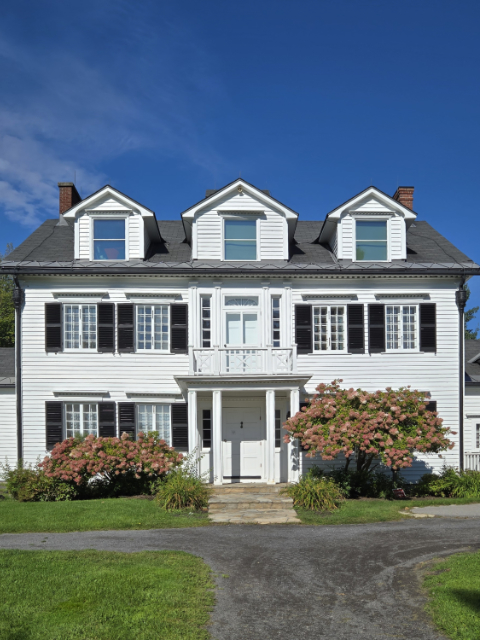Ottawa, Ontario (1829)
The Building:
The Billings Estate is one of Ottawa’s earliest homes. It was built by Braddish Billings in the late 1820s and was occupied by the Billings family until 1975. In 1968, the house was designated a National Historic Site. The site is primarily known for its landscape and exterior features. Many of the earliest interior finishes have been lost or are covered, but much of the original or early plaster remains. The City of Ottawa operates the site as a historic house museum.
Project Synopsis:
In 2024, the City retained HPCS to assess the condition of two plaster ceilings that appeared to be in very poor condition. It was immediately clear to us that the surface appearance of the ceilings was misleading because they were both covered in a skim coat of textured plaster that was failing. The skim coat was not original and had been applied over earlier paint layers.
Fortunately, it was relatively easy to access the back of the ceilings by lifting floor planks in the attic above. From the back, we could properly assess the condition of the plaster by systematically testing the lugs and keys. Despite the poor appearance of the ceilings, we found the underlying original plaster to be in relatively good condition for its age. There was isolated damage from recent interventions, minor water damage in the corner of the ballroom, and some large cracks from building settlement, but the lugs and keys were mostly intact.
We recommended the removal of the deteriorating skim coat material and cosmetic repairs as required after the removal. We proposed plaster consolidation as an optional preventative conservation treatment: the rooms would be closed and cleared of artifacts for the cosmetic work. Hence, a window of opportunity was open for additional work.
The City chose a proactive long-term approach and retained HPCS to consolidate the ceilings before the cosmetic work.
In the lead-up to the project, a DSS identified asbestos in the skim coat material. The abatement contractor proposed removing the entire ceiling assembly in both rooms. This would have been a catastrophic loss and was completely unnecessary. HPCS worked with the City and the contractor to alter the abatement process so that only the skim coat was removed and the plaster preserved. The asbestos abatement was completed without any damage to the historic plaster.
HPCS consolidated the two ceilings from the attic using HPCS S-20 and S-50 primers and R-100 Consolidant. All damaged keys were replaced with AD Premixed Lug and Key Replacement.


